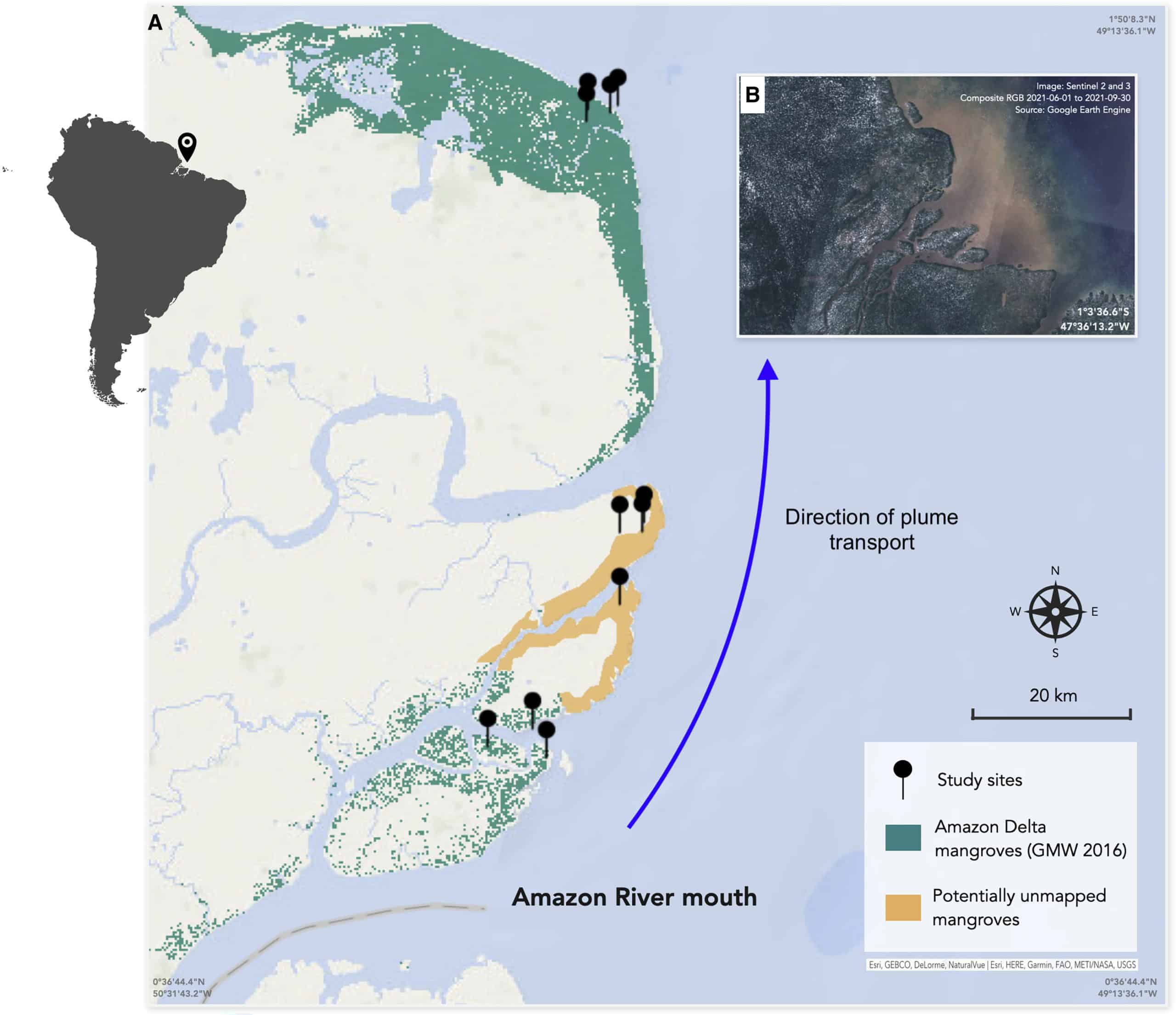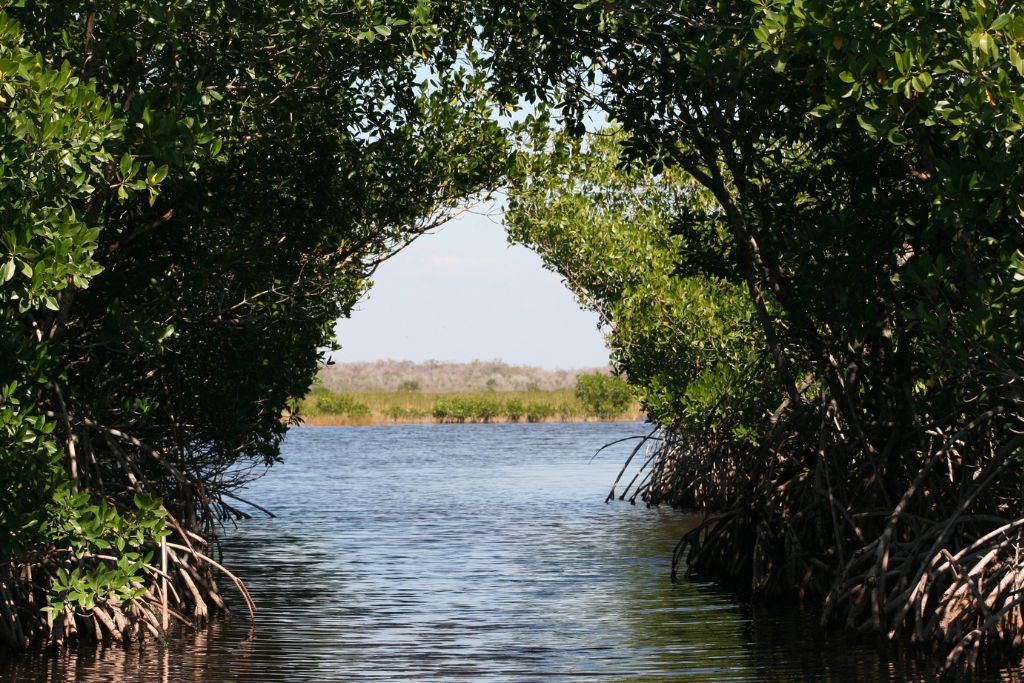Published just days before the world celebrates the International Day for the Conservation of the Mangrove Ecosystem on July 26, a new study conducted by National Geographic Explorers revealed the discovery of one-of-a-kind freshwater mangrove forests with unique characteristics in the Amazon delta.
—
In a paper published in July in Current Biology, scientists describe the groundbreaking discovery of the world’s first freshwater mangrove forests on the Brazilian coast.
The scientists involved in the two-year exploration of the Amazon River Basin identified the unique ecosystem along the Amazon Delta, which covers an area of nearly 70 square miles (180 square kilometres) – adding a staggering 20% to the previously mapped mangrove area.

Figure 1: Mangrove Distribution on the Amazon Delta
The scientists analysed data from the soil pore water, salinity, composition, tree density, and volume using 3D laser scanning from the ground as well as from drones.
They found that the combination of the Amazon river plume – the freshened water mass that formed in the sea as a result of the mixing of river discharge and saline seawater – and heavy rainfall created a unique set of mangrove trees with a structure that yields nearly no salinity.
Known mangrove forests are typically found along shores, rivers and coastlines in 118 tropical and subtropical countries, and they live in water up to 100 times saltier then most other plants are able to tolerate. Most of these trees live and thrive on muddy soil and can filter out as much as 90% of all the salt in seawater when it enters their roots. Some species can even excrete the salt, which covers the surface of their leaves.
Despite their unique structure, these newly discovered freshwater mangrove forests provide similar ecosystem services to most mangroves worldwide, such as acting as carbon sinks by absorbing and storing large quantities of carbon dioxide from the atmosphere, protecting shoreline ecosystems from erosion, and providing habitats to terrestrial and aquatic species, such as monkeys, birds, crabs, and fish.
“It was phenomenal to see this type of freshwater flooded forests in this environment,” said Bernardino – one of the two scientists behind the groundbreaking research – to National Geographic. “This discovery is critical to further understanding the intricacies of mangrove forests and how they are crucial to local communities that surround them.”
You might also like: 7 Fascinating Facts About Mangroves You Need to Know About


















